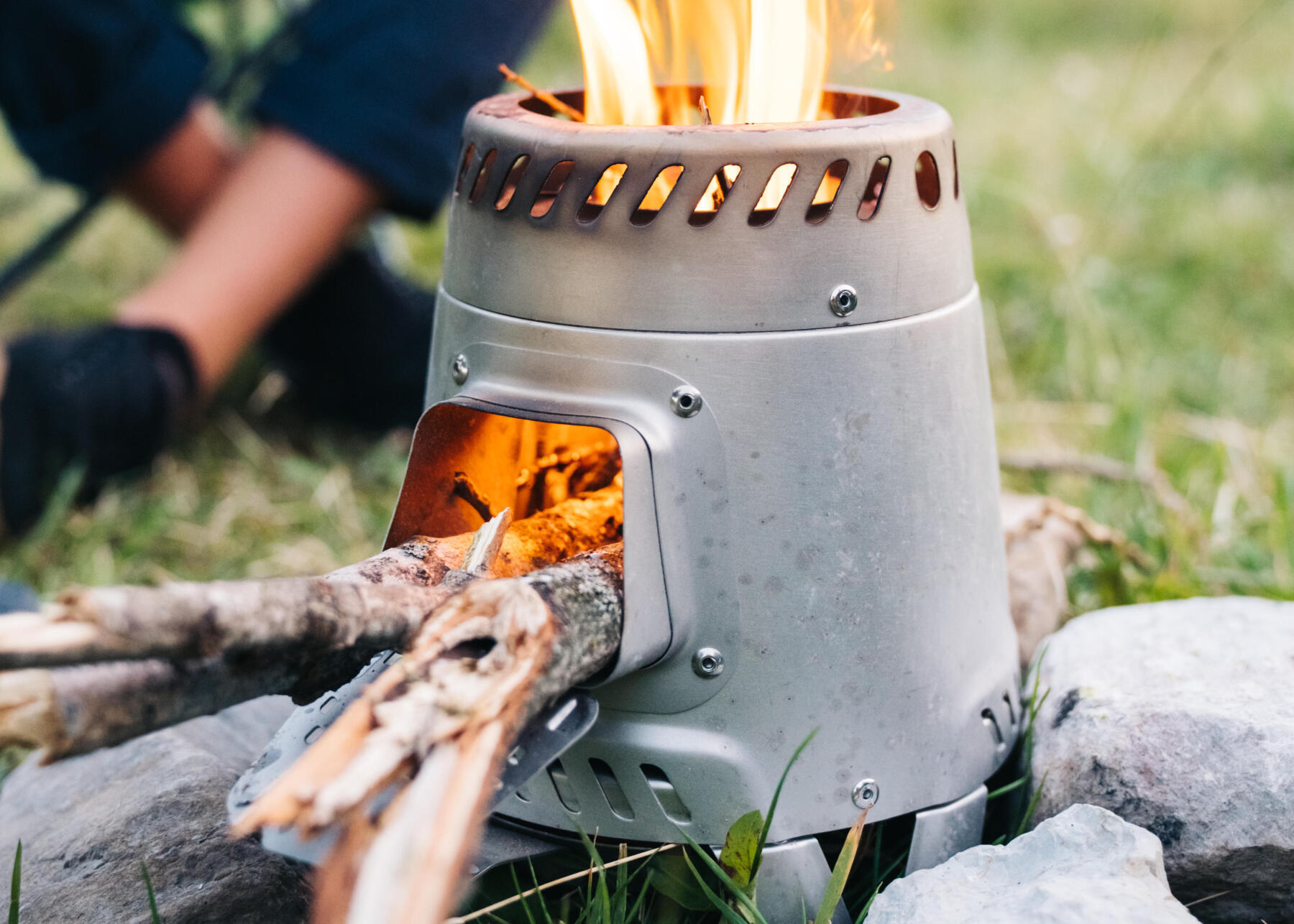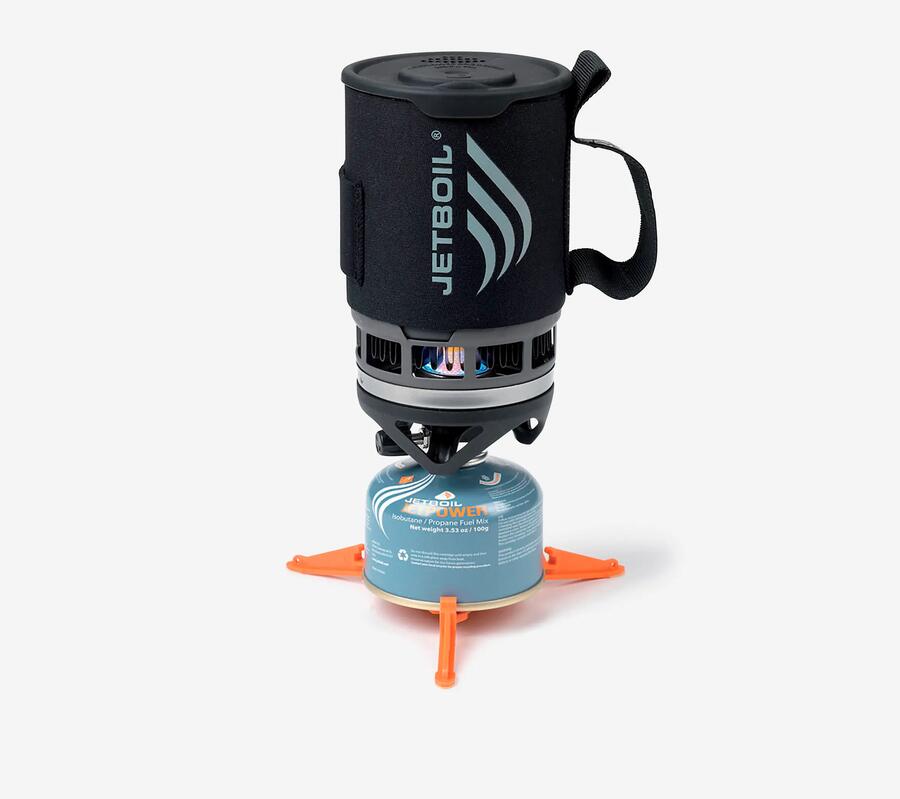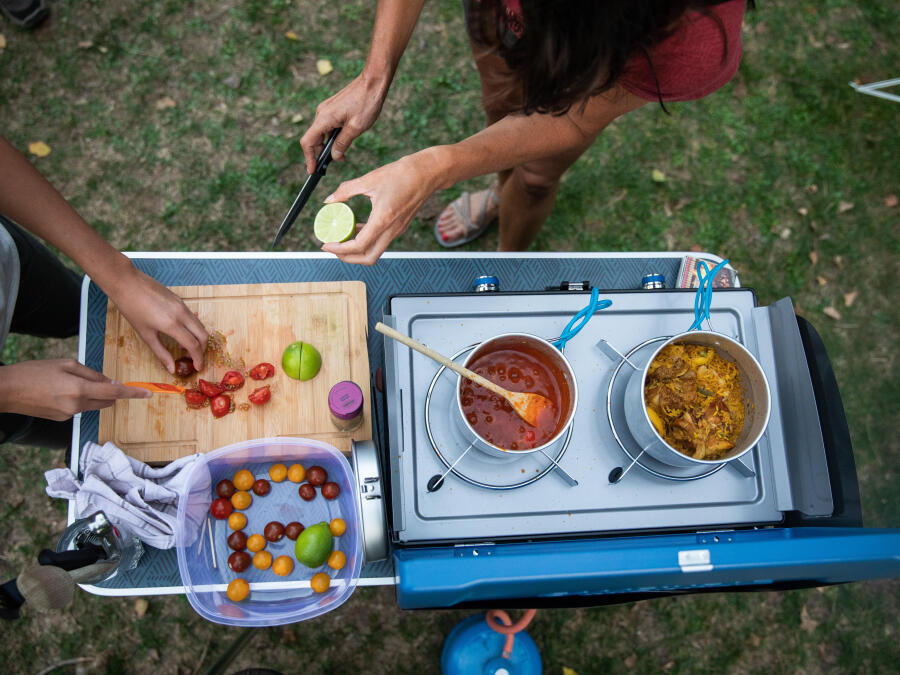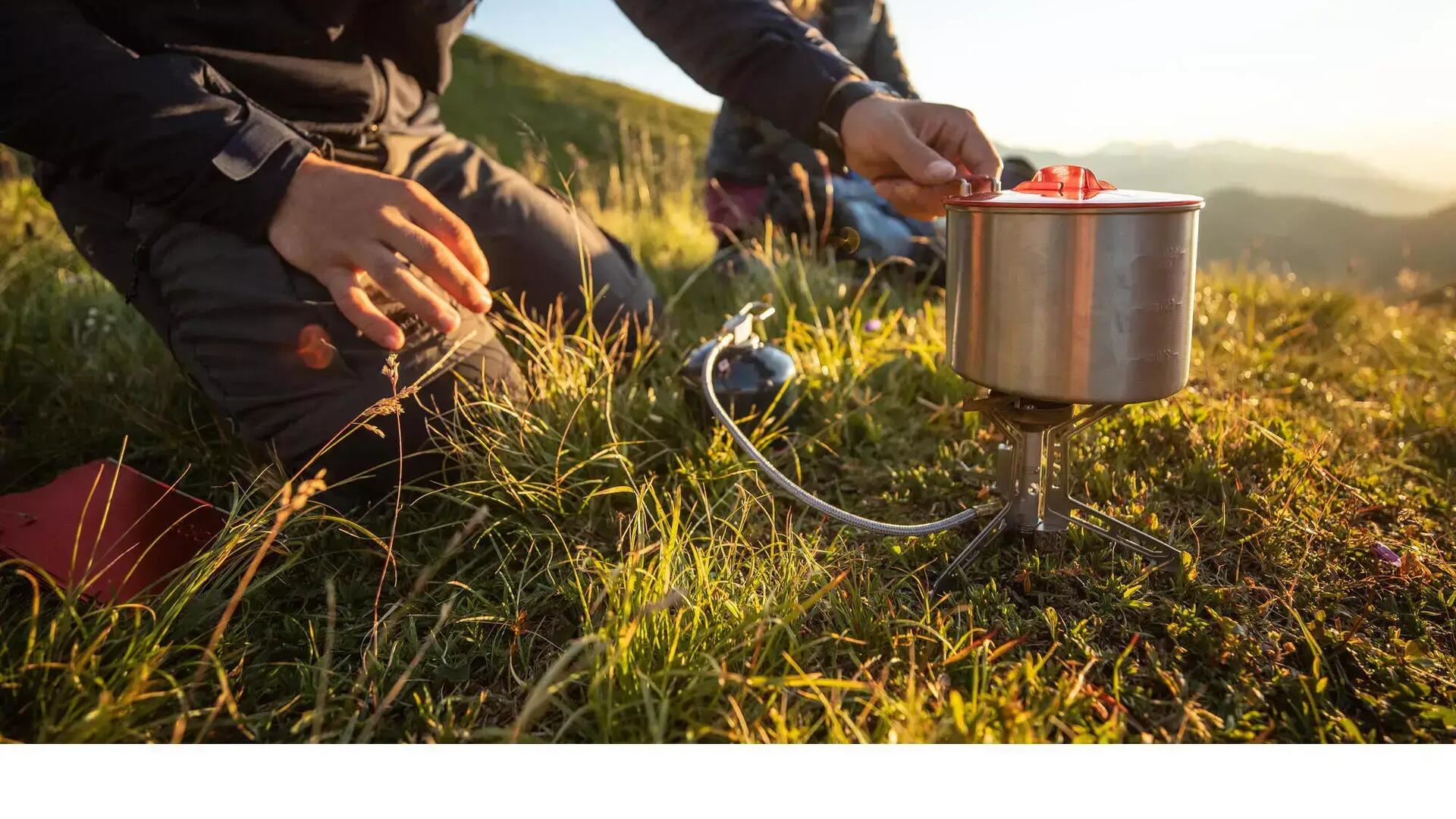1/ The criteria?
Firstly, it’s important to know what you need and what's available based on different criteria:

The stove, whether gas, gasoline, multi-fuel or even wood, is an essential piece of equipment for all outdoor activities: camping, hiking, bivouacking, fishing, hunting, mountaineering, etc. Check out different types of stove!
Cook hot dishes and boil water with the stove in diverse conditions.
This stops you depending on shelters, eating cold food only or eating food found on trails.
These are our tips!
Firstly, it’s important to know what you need and what's available based on different criteria:
It all depends how you use your stove. We will see the differences later depending on different activities and usage.
The stove power is determined by two elements. First, the heating rate, this is the time required for water to boil, i.e. at a temperature of 100°. This can of course vary outdoors depending on the altitude, wind, temperature, etc. Second, the number of watts, this corresponds to the power of your stove. This data is the closest to reality. The higher the number, the more efficient it is and therefore the heating time will be faster. This data, usually between 1200 and 3000 watts, is a technical measure of the amount of heat released. It represents its power but it also influences its consumption emitted (g/hour).
The battery life of your stove is an important criteria. Its compatibility with cartridges, connection, fuel, all need to be taken into account depending on your battery life.
When it comes to accessories, there are several options that may or may not be useful for your activity.
A few examples: a built-in windbreaker or not, a smaller or bigger saucepan stand, a remote stove (the stove is not on the cartridge), a storage bag or a carry case, flame setting level, etc.
During your regular cleaning, the more the different parts can be separated or removed, the easier it is to wash them such as grills or hobs for example.
You will generally use your stove when you’re away from home. Therefore, it will be transported or carried. If you're travelling by car you won’t have the same restrictions as if you're leaving on foot with your backpack.
The size of your pots and the number of people to feed will affect your choice of what capacity you need. You should look at the litres of water to heat, the size of your saucepan and the number of burners.

Here are the main types and most used stoves on the market

Choosing a stove can be complicated given the diversity of stoves, ignition methods, systems, burners, manufacturers, etc. We explain the characteristics of the stove models. Several families of products exist, it is the source of energy used by the stove which makes the difference.
The multi-fuel stove is often used by trekker or explorers on a big adventure and don't know what to expect on their tip. They can mix various fuel sources, anything that can possibly be burned : gas, oil, paraffin, petrol, etc.
The petrol stove has various names, it is a bit like the cousin of the multi-fuel stove. It can be found under the name of alcohol stove or liquid fuel. It is mainly used by experienced people because it is more expensive and more technical, but some models are also very easy to use. The gas stove is very versatile and offers good autonomy because it can be used with different combustible liquids.

The wood or coal stove is the most authentic. We keep this camp-fire spirit and simplicity of use. It has several advantages. First, it is resistant, easy to use and above all the source of fuel is unlimited, wood for example can be found in abundant quantities depending on the terrain of your outing. It also allows a fire to be controlled because the flame is channelled and therefore limits the risk of fire. Cooking, however, can be long and take longer than with other stoves. It will also depend on the amount of fuel available, wood collected.
As its name suggests, it runs on electricity and therefore requires a connection: The most popular model are hobs, whether electric or induction. They offer comfort to put pots or pans and do not have flames.

The gas stove, also called cartridge stove, is the most used stove model. It is quite traditional because it is possible to find gas cartridges everywhere. In addition to being accessible, it is easy to use. There are two international standards :
- the model using screw cartridges: this is a worldwide standard. Manufacturers can create their own models with this system. In general, manufacturers guarantee their stoves if used with cartridges of the same brand.
- The model using " Easy Click" or valve cartridges. This model is exclusively developed by the Camping Gaz brand.
It is prohibited to transport gas cylinders by plane.
There are cartridge standards. Decathlon Forclaz cartridges (100 g, 230 g, 450 g) comply with standard EN417.
Be sure to check their compatibility with your stove during your purchase.
There are 3 volume types depending on what you need:
Butane
Butane is the most used amongst the different gases. It is recommended up to around 10°, it will be less efficient below that.
Butane/propane mix
Can easily go down to 0°.
Propane only
It’s the most used in the United States but isn’t available in Europe. If you are going to destinations with negative temperatures then it's highly recommended to take specific cartridges: "severe or extreme cold". They are supposed to be identifiable.

Have you heard of the optimized stoves?
The optimized stove is a combination, a complete set including the stove, an integrated wind screen and the cooking pot. It offers very good performance because it minimises heat loss. However, the cooking pot only works with the corresponding stove and vice versa. Moreover, they are often in formats designed primarily for heating water and rehydrating freeze-dried dishes. It will be more complicated to do great meals with this type of stove.

What is the best stove for camping?
If you go to a camp-site by car, motor home, van, you have the possibility of cooking with gas stoves. There are many models in varied sizes (with 1 or 2 burners) to adapt to all sizes of families and saucepans. They are perfect for preparing good dishes in your roaming kitchen.
You can also take a wood stove if you are camping for several days in the same place and you don’t have to carry it. Be careful, however, to follow the various regulations in force.
Another alternative, is to choose an electric stove, it requires a 220V connection but does not use flames and can therefore be used indoors (in a tent or awning for example).

Which stove for hiking, bivouacking or for trekking?
When you go hiking with your backpack and you have to carry your stove, it is recommended to choose compact and light stoves even though they are narrower and therefore less stable.
The most versatile and accessible stoves are still the different types of gas stove. It's the system with the most diversity. You can choose the size, power or stability depending on your needs.
Your activity or route is set, are you going trekking in the high mountains? Opt for small stoves or optimised stoves to get to the point and have the least possible weight.
If you are going on an adventure for several weeks and you do not know what to expect, then it is best to take a multi-fuel stove so that you are as independent as possible.

Finally, to find a good gas stove, you have to find the balance between weight, power and stability. All in the most compact format possible because you have to carry it.
Our favourite?
The separate gas stove with piezo - MT500, combines stability, power and comfort!
To fully enjoy your adventures and the meals you will make with your stove. Here are our practical tips that can help you in the great outdoors :
Don't hesitate to insulate your cartridge in your clothes or sweaters in order to keep the gas at an ambient temperature. The performance will then be better and the full power of your stove will be at its maximum capacity.
Have you forgotten your wind-shield ? Don't worry, you can dig around the stove or surround it with stones to protect it from the wind or different weather conditions.
And finally, remember your lighter or flint, so you always have a spark.


Avid hiker and former scout